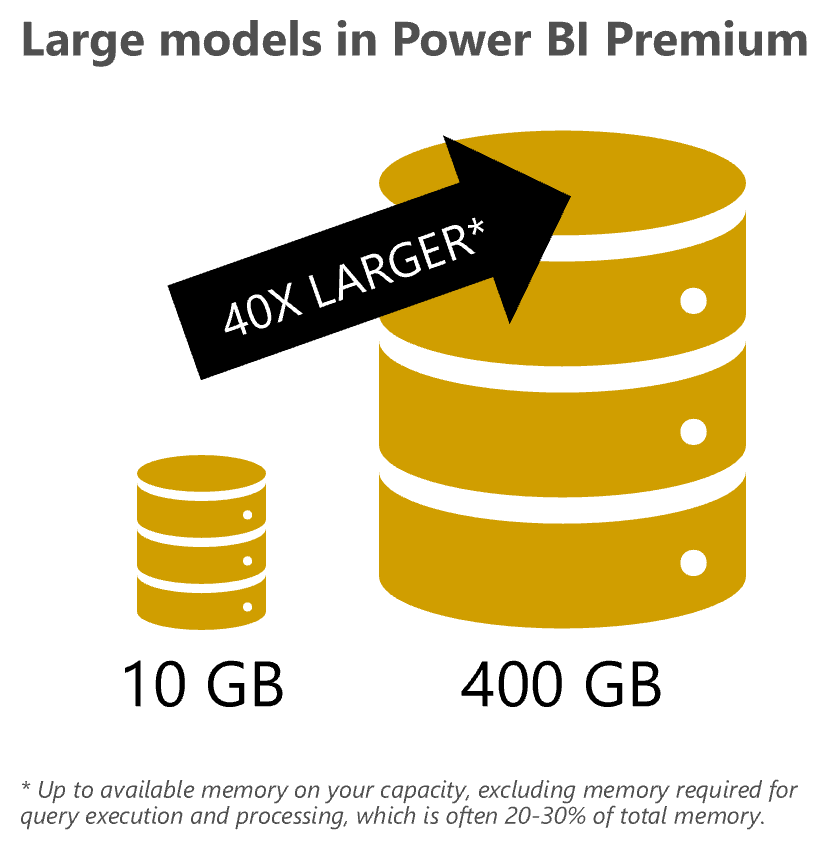Large models in Power BI Premium public preview
With exponential growth in data volumes and complexity, the ability to easily extract actionable insights for intelligent decision-making is paramount to the success of large enterprises. Power BI customers demand analytical solutions that scale to petabytes, are secure, easy to manage, and accessible to all users across the largest organizations. This demand has driven Power BI to support self-service and IT-managed enterprise workloads on a single, all-inclusive platform.
We are excited to announce the public preview of large models in Power BI Premium. Power BI datasets can store data in a highly compressed, in-memory cache for blazing fast query performance. This enables fast user interactivity over large datasets. Until now, dataset caches in Power BI Premium have been limited to 10 GB after compression. Large models remove this limitation, so dataset cache sizes are limited only by the Power BI Premium capacity size. Use incremental refresh together with large models to unlock large datasets for interactive analysis with minimal management overhead.
The large models feature brings Power BI dataset cache sizes to parity with Azure Analysis Services model sizes. However, Power BI is the next generation of Analysis Services. Customers can take advantage of Power BI features such as incremental refresh, aggregations, and shared and certified datasets to take Power BI beyond Analysis Services in terms of simplified-management experience, scalability and discoverability. Large models is key to Power BI containing a superset of Analysis Services functionality, and follows in the same vein as the XMLA endpoints announcement for open-platform connectivity.
Please see https://aka.ms/LargeModels for further information such as availability by region, and how to set up your Power BI Premium capacity for large models.





